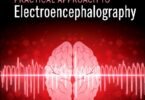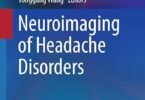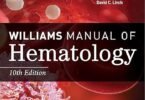
Outline of the Article
- Introduction
- Overview of the Williams Manual of Hematology, Tenth Edition
- Key Features and Updates
- Initial Clinical Evaluation
- Disorders of Red Cells
- Disorders of Granulocytes
- Disorders of Monocytes and Macrophages
- Principles of Therapy for Neoplastic Hematological Disorders
- The Clonal Myeloid Disorders
- The Polyclonal Lymphoid Diseases
- The Clonal Lymphoid and Plasma Cell Diseases
- Disorders of Platelet and Hemostasis
- Disorders of Coagulation Proteins
- Thrombosis and Antithrombotic Therapy
- Transfusion and Hemapheresis
- Conclusion
- FAQs
Introduction
The Williams Manual of Hematology, Tenth Edition, authored by Marshall Lichtman, Kenneth Kaushansky, Josef Prchal, Marcel Levi, and others, stands as a comprehensive clinical reference for both common and uncommon blood disorders. This article explores the key features and updates of this edition, providing a concise overview of its content and significance in the field of hematology.
Overview of the Williams Manual of Hematology, Tenth Edition
The Williams Manual of Hematology, Tenth Edition, serves as a condensed yet comprehensive compilation of the pathogenic, diagnostic, and therapeutic essentials of blood cell and coagulation protein disorders. This portable guide is referenced to the classic Williams Hematology, ensuring that it remains a reliable source of information for healthcare professionals.
Key Features and Updates
This updated edition of the Williams Manual of Hematology incorporates the latest research findings and includes over 100 full-color clinical photographs, enhancing the reader’s understanding of various blood disorders. The manual has been carefully edited to deliver clinical point-of-care facts, making the process of differential diagnosis faster, easier, and more efficient for practitioners.
Initial Clinical Evaluation
The manual provides insights into the initial clinical evaluation of patients presenting with blood disorders, guiding healthcare professionals in conducting thorough assessments to reach accurate diagnoses.
Disorders of Red Cells
A detailed section on disorders of red cells covers a wide range of conditions, from anemias to red cell membrane disorders, providing diagnostic and therapeutic essentials for each.
Disorders of Granulocytes
Similarly, the manual delves into disorders of granulocytes, offering insights into the pathogenesis, diagnosis, and management of conditions such as neutropenia and granulocytic leukemias.
Disorders of Monocytes and Macrophages
This section of the manual focuses on disorders involving monocytes and macrophages, including histiocytic disorders and hemophagocytic syndromes, offering a comprehensive understanding of these conditions.
Principles of Therapy for Neoplastic Hematological Disorders
The manual discusses the principles of therapy for neoplastic hematological disorders, outlining treatment approaches for various malignancies of the blood and bone marrow.
The Clonal Myeloid Disorders
A dedicated section covers the clonal myeloid disorders, providing detailed information on myeloproliferative neoplasms, myelodysplastic syndromes, and other related conditions.
The Polyclonal Lymphoid Diseases
The manual also addresses polyclonal lymphoid diseases, including lymphadenopathies and benign lymphoproliferative disorders, offering diagnostic insights and management strategies.
The Clonal Lymphoid and Plasma Cell Diseases
This section provides a comprehensive overview of clonal lymphoid and plasma cell diseases, covering a wide range of conditions such as lymphomas and plasma cell neoplasms.
Disorders of Platelet and Hemostasis
The manual offers a detailed discussion on disorders of platelet and hemostasis, including thrombocytopenias and von Willebrand disease, providing essential information for diagnosis and management.
Disorders of Coagulation Proteins
A comprehensive overview of disorders of coagulation proteins is provided, including hemophilias and other rare coagulation disorders, with a focus on diagnostic and therapeutic essentials.
FAQs
-
Is the Williams Manual of Hematology suitable for medical students?
- Yes, the manual provides a comprehensive yet accessible overview of blood disorders, making it suitable for medical students seeking to deepen their understanding of hematology.
-
How does the Tenth Edition differ from previous editions?
- The Tenth Edition incorporates the latest research findings and includes updated content and clinical photographs to enhance the reader’s learning experience.
-
Is the manual suitable for practitioners in other fields?
- Yes, the manual’s concise format and clinical focus make it a valuable resource for practitioners in various fields seeking to enhance their knowledge of blood disorders.
-
Can the manual be used as a standalone resource?
- While the manual is referenced to the classic Williams Hematology, it can be used as a standalone resource for quick reference and point-of-care information.
-
Are there any online resources that complement the manual?
- Yes, the publishers of the manual may offer online resources such as case studies and additional materials to complement the content of the manual.







